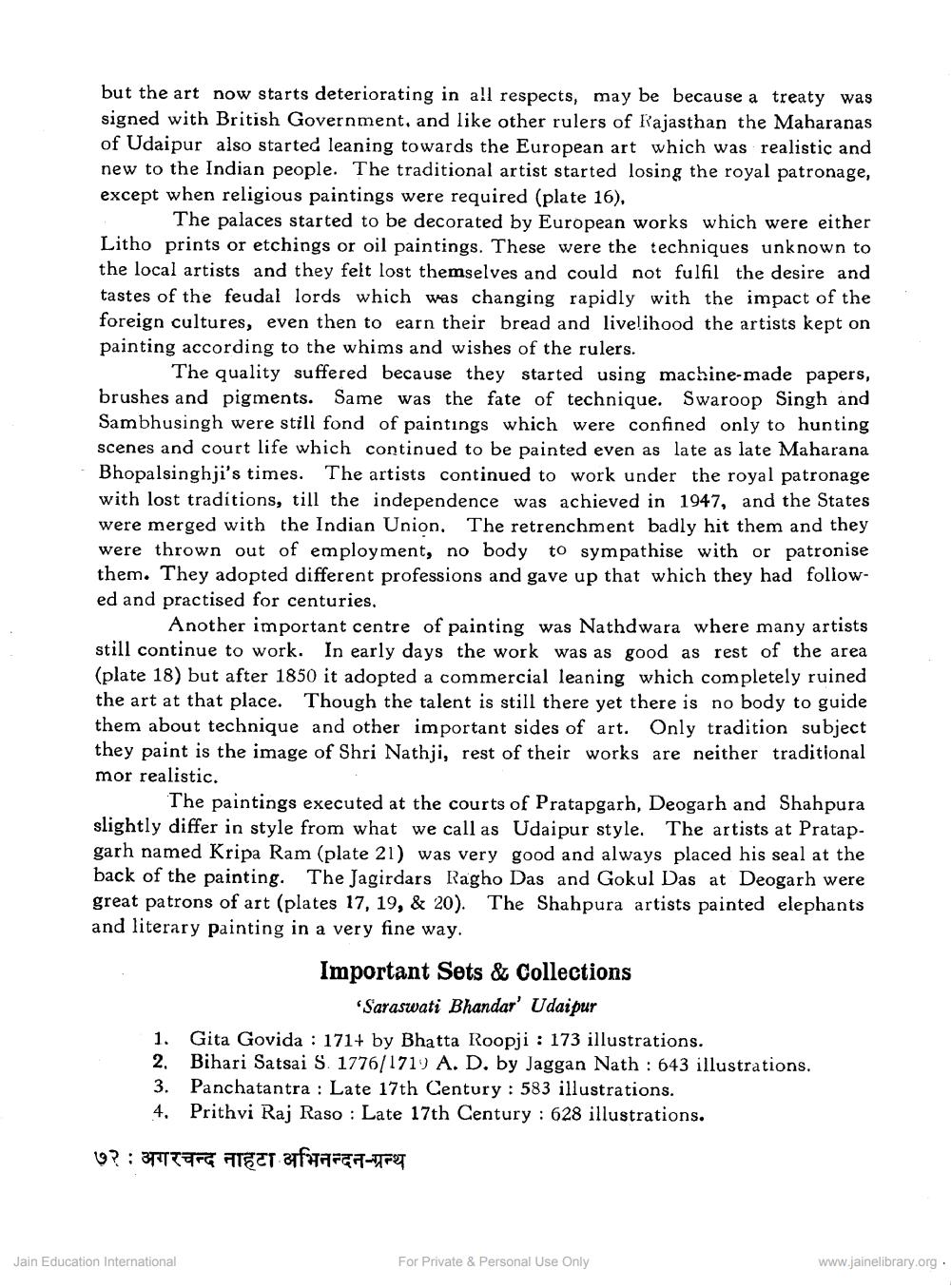Book Title: Mewar Painting Author(s): Kumar Sangramsingh Publisher: Z_Agarchand_Nahta_Abhinandan_Granth_Part_2_012043.pdf View full book textPage 5
________________ but the art now starts deteriorating in all respects, may be because a treaty was signed with British Government, and like other rulers of Rajasthan the Maharanas of Udaipur also started leaning towards the European art which was realistic and new to the Indian people. The traditional artist started losing the royal patronage, except when religious paintings were required (plate 16). The palaces started to be decorated by European works which were either Litho prints or etchings or oil paintings. These were the techniques unknown to the local artists and they felt lost themselves and could not fulfil the desire and tastes of the feudal lords which was changing rapidly with the impact of the foreign cultures, even then to earn their bread and livelihood the artists kept on painting according to the whims and wishes of the rulers. The quality suffered because they started using machine-made papers, brushes and pigments. Same was the fate of technique. Swaroop Singh and Sambhusingh were still fond of paintings which were confined only to hunting scenes and court life which continued to be painted even as late as late Maharana Bhopalsinghji's times. The artists continued to work under the royal patronage with lost traditions, till the independence was achieved in 1947, and the States were merged with the Indian Union. The retrenchment badly hit them and they were thrown out of employment, no body to sympathise with or patronise them. They adopted different professions and gave up that which they had followed and practised for centuries. Another important centre of painting was Nathdwara where many artists still continue to work. In early days the work was as good as rest of the area (plate 18) but after 1850 it adopted a commercial leaning which completely ruined the art at that place. Though the talent is still there yet there is no body to guide them about technique and other important sides of art. Only tradition subject they paint is the image of Shri Nathji, rest of their works are neither traditional mor realistic. The paintings executed at the courts of Pratapgarh, Deogarh and Shahpura slightly differ in style from what we call as Udaipur style. The artists at Pratapgarh named Kripa Ram (plate 21) was very good and always placed his seal at the back of the painting. The Jagirdars Ragho Das and Gokul Das at Deogarh were great patrons of art (plates 17, 19, & 20). The Shahpura artists painted elephants and literary painting in a very fine way. Important Sets & Collections Saraswati Bhandar' Udaipur 1. Gita Govida : 171+ by Bhatta Roopji : 173 illustrations. 2. Bihari Satsai S. 1776/1719 A. D. by Jaggan Nath : 643 illustrations. 3. Panchatantra : Late 17th Century : 583 illustrations. 4. Prithvi Raj Raso : Late 17th Century : 628 illustrations. ७२ : अगरचन्द नाहटा अभिनन्दन-ग्रन्थ Jain Education International For Private & Personal Use Only www.jainelibrary.orgPage Navigation
1 ... 3 4 5 6 7 8 9
